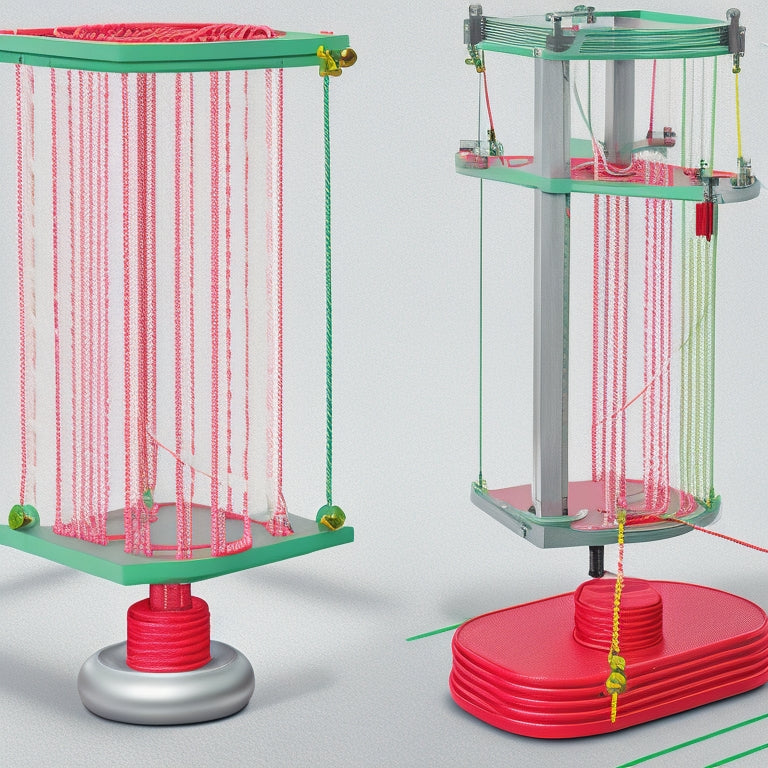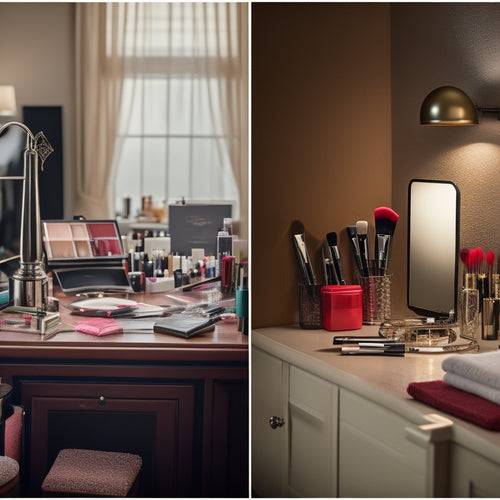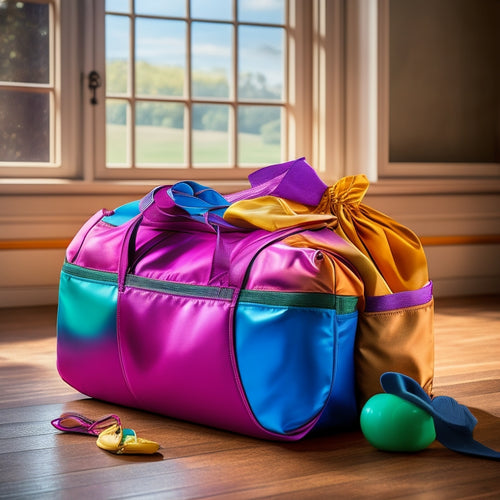
Dancer Counterweight Setup: Troubleshooting Guide
Share
Counterweight attachment and adjustment are critical for maintaining ideal tension on the take-up roll. Incorrect setup can lead to inadequate tension, resulting in compromised system performance. Dancer arm movement can indicate tension issues, which can be resolved by adjusting counterweight configurations. Proper installation of the dancer bar and correct weight distribution are essential for maintaining correct tension. A systematic troubleshooting approach can help diagnose and resolve counterweight malfunctions. By understanding the intricacies of counterweight setup and dancer arm tension, system performance can be optimized, and issues mitigated. Further exploration of these principles can provide a deeper understanding of ideal system functionality.
Key Takeaways
• Incorrect counterweight attachment can lead to inadequate tension on the take-up roll, affecting system performance.
• Proper weight distribution is crucial for optimal system functionality, and correct attachment is key.
• Adjusting counterweights can resolve tension-related issues, and troubleshooting tips recommend experimenting with different configurations.
• Dancer arm movement can indicate tension issues, and adjusting the counterweight setup can resolve these problems.
• Referencing the User Manual and seeking community support can provide valuable insights for resolving counterweight issues efficiently.
Counterweight Attachment Essentials
Properly attaching counterweights to the dancer system is essential, as incorrect attachment can lead to inadequate tension on the take-up roll, resulting in suboptimal system performance. Correct weight distribution is vital to achieve peak system functionality.
Troubleshooting tips suggest that adjusting counterweights can help resolve tension-related issues. Make sure that counterweights are attached according to the provided image, and adjust them to add or remove weight to the dancer as needed.
Following the guidelines for attaching counterweights is necessary for proper functionality. By doing so, you can maintain the correct tension on the take-up roll, ensuring your system operates at its best.
Dancer Arm Tension Troubles
When the dancer arms move all the way up, it is a significant indication that there is zero tension on the take-up roll, highlighting the importance of adjustments to the counterweight setup. This lack of tension can be attributed to incorrect positioning of the counterweights, which can be resolved by adjusting weights and making tension adjustments.
Ensuring the dancer bar is in place is vital for maintaining tension. Proper installation of the dancer bar adds weight to the front, causing the arms to drop. By experimenting with different counterweight configurations and referencing the User Manual, users can troubleshoot and resolve tension-related problems, achieving the desired tension on the dancer arms.
Troubleshooting Counterweight Issues
Counterweight malfunctions can be efficiently diagnosed and resolved by employing a systematic troubleshooting approach. This involves identifying and addressing potential issues with the dancer arm tension and counterweight setup.
To achieve the best weight distribution, it is essential to adjust the counterweights correctly, ensuring proper tension on the take-up roll. Incorrect tension adjustments can lead to issues with the dancer arm movement. By experimenting with different counterweight configurations, users can identify and resolve tension-related problems.
Referencing the User Manual and seeking community support can provide valuable insights and troubleshooting tips. By following a systematic approach, users can efficiently troubleshoot counterweight issues, ensuring excellent performance and freedom from printer-related frustrations.
Frequently Asked Questions
Can I Use Alternative Materials for Counterweights in My Dancer System?
When contemplating alternative materials for counterweights, make sure the selected material maintains ideal weight distribution, as improper weight allocation can compromise system functionality, affecting overall performance and reliability.
How Often Should I Inspect and Clean the Counterweight Attachment Points?
In a recent printer downtime incident, neglecting counterweight attachment point maintenance led to costly repairs. Regular inspections (every 500-1000 print cycles) and cleaning of counterweight attachment points are essential to prevent corrosion risks and monitor wear indicators, ensuring peak system performance and minimizing downtime.
Are There Any Safety Precautions When Handling Heavy Counterweights?
When handling heavy counterweights, prioritize safety by employing proper weight handling and lifting techniques, adhering to hazard avoidance protocols, and implementing established safety measures to prevent injuries and maintain a secure working environment.
Can I Adjust Counterweights While the Printer Is in Operation?
When operating the printer, refrain from making real-time adjustments to counterweights, as dynamic balancing is essential, and alterations can disrupt the system's equilibrium, potentially causing mechanical stress and compromising overall performance.
Will Using Incorrect Counterweights Void My Printer's Warranty?
In a recent case, a printer owner used incompatible counterweights, resulting in premature wear on the take-up roll, potentially voiding the warranty. Using incorrect counterweights can lead to warranty implications, as it deviates from printer specifications, compromising the device's integrity.
Related Posts
-

3 Pro Tips to Overcome Makeup Task Procrastination
You're stuck in a never-ending cycle of makeup task procrastination, feeling overwhelmed by the complexity of the tas...
-

Dancewear Bags to Keep You Organized and Stylish
When it comes to dancewear bags, you want something that's both functional and stylish. Look for durable materials li...
-

Winter Dance Blanket: Perfect Super Bulky Knit
The Winter Dance Blanket is a delightful super bulky knit pattern designed for effortless creation, featuring a simpl...


